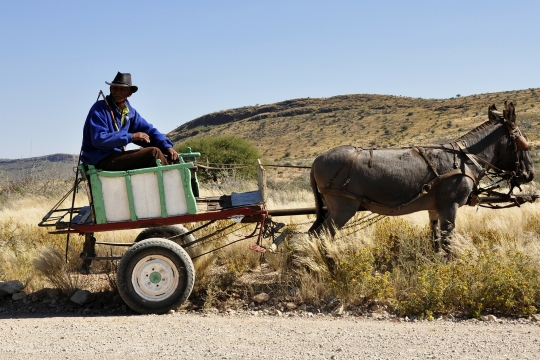Namibia is the driest country in Sub-Saharan Africa and one of the most vulnerable countries to adverse effects of climate change. Reliable climate information and early warning are important tools of managing risks in climate-sensitive economic sectors like agriculture. Despite recent improvements in climate information forecasting, access and use remain low in Africa.
This paper looked at the perceived importance of and access to climate information (seasonal forecasts and early warning) as well as its integration into farm decisions by farming families in Northern Namibia. 653 households were interviewed in seven constituencies spread across three administrative regions, namely Omusati, Oshana and Oshikoto. Community members and leaders provided feedback on the results in local community workshops.
Whereas most rural households perceived climate information as being important in their farm decisions, many of them had no access to such information. Less than half of the households had received information relevant for livestock production. All the cattle farmers said they would benefit from climate information and early warning to help them make informed decisions. They had used past drought warnings to sell their animals while still healthy to preserve value; to stock livestock feeds; and to move their animals to other areas where they could find pasture. Although 63% of the households perceived climate information as being important in their crop production decisions, only half had received it. Seasonal climate forecasts were the most relevant for crop producers, and farmers mainly used them to adjust their planting times, to store food, and to plant short-cycle and drought-tolerant crops. We find a strong relationship between access to climate information and households’ adaptive capacity as well as their dietary diversity.
Despite receiving scientific climate information, many households still relied on the traditional methods of weather forecasting to make farm decisions. Most households said the climate information they received was insufficient for decision making. The two most important channels through which households received climate information were radio and peers. Access to extension services was limited, and awareness of the available adaptation options was low, particularly among households with no access to climate information.
Providing agricultural extension (training and information) services can increase the access to and use of climate information while linking farmers to adaptive technologies developed in research centers. There is a need to find ways of integrating scientific climate information with traditional knowledge systems for wider acceptance. The communication network was very poor in some regions and can be improved to promote the use of digital technology for wider outreach, since almost all households have mobile phones. Developing markets for inputs (such as seeds and fertilizer) and outputs (crops that can be sold) can encourage farmers to invest in improved crop varieties and to seek necessary technical information, including seasonal climate forecasting. This will require improvement of rural transport infrastructure and development of value chains (for instance, from grower to processor to market). Finally, there is a need for improved collaboration between state and non-state actors to ensure timely dissemination of relevant information to farmers and other stakeholders who need it.
This brief is based on: Can Climate Information Salvage Livelihoods in Arid and Semiarid Lands? An Evaluation of Access, Use and Impact in Namibia, EfD Discussion Paper 20-09, April 2020, by Zachary Gitonga and Martine Visser, Environmental-Economics Policy Research Unit (EPRU), University of Cape Town, South Africa.

